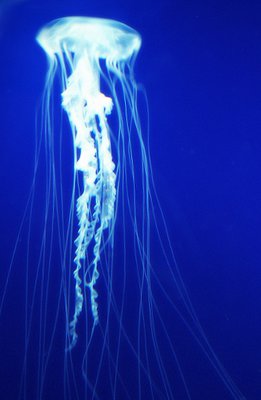Atlantic Sea Nettle Jellyfish
Category: Jellyfish

Facts about Atlantic Sea Nettle Jellyfish, "Scientific name for Atlantic Sea Nettle Jellyfish is Chrysaora quinquecirrha". Atlantic Sea nettle jellyfish is also known as the East Coast sea nettle. Atlantic Sea Nettle Jellyfish is known to favor tropical and subtropical habitations of indo-pacific and the Atlantic. You will frequently see this species in the United States along the east coast like Chesapeake Bay. The Atlantic Sea nettle jellyfish is smaller than the Pacific Sea nettle. Typically the Atlantic Sea Nettle Jellyfish is pale pinkish or yellowish but compared to other species it is endowed with a greater color variation.
The Atlantic Sea nettle is carnivorous and has its mouth at the center of one end of its body. This paves way to a gastrovascular cavity that the sea nettle utilizes for purposes of digestion.
Its mouth is surrounded by tentacles that are used for capturing food. The Atlantic Sea Nettle Jellyfish lacks respiratory or excretory organs. All sea nettles belong to either the polyp stage where reproduction is asexual or the medusa stage also known as the free swimming stage where reproduction is sexual.
The Atlantic Sea Nettle Jellyfish is bell shaped, semi transparent, dotted white and it has reddish-brown stripes. Those sea nettles that lack stripes are endowed with an opaque or white colored bell.
The Atlantic Sea Nettle Jellyfish is known to sting and its sting can be harmful to its prey. It may not however cause death in human beings except in cases of allergic reactions. The sting is uncomfortable though and the discomfort can be neutralized by applying vinegar on the affected area. The sting is meant to protect the Atlantic Sea Nettle Jellyfish from its predators.
This Atlantic Sea Nettle Jellyfish feeds on zooplankton, other jellies, at times crustaceans and ctenophores. Their tentacles are used for capturing their prey which is then transported to their gastrovascular cavity for digestion to take place.
These are some of the other things that are consumed by the Atlantic Sea Nettle Jellyfish:
· Mosquito larvae
· Minnows
· Bay anchovy eggs and
· Worms.

 Back To Category Jellyfish
Back To Category Jellyfish